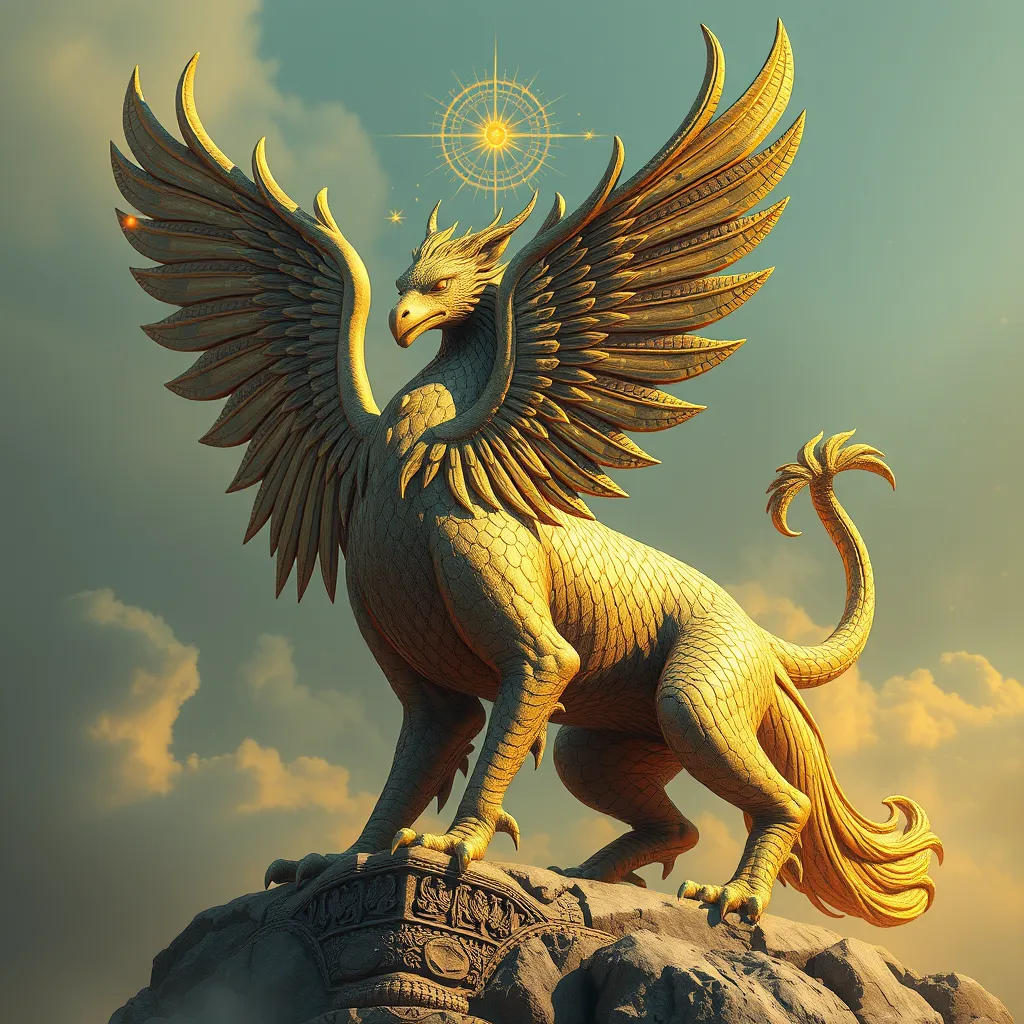The Lamassu in Modern Art: Contemporary Interpretations of the Ancient Icon
I. Introduction
The Lamassu, a majestic creature with the body of a bull or lion, the wings of an eagle, and the head of a human, has long captured the imagination of art enthusiasts and historians alike. Originating from ancient Mesopotamia, these monumental sculptures served as protective deities at the entrances of palaces and temples, symbolizing power and guardianship. This article will delve into the modern interpretations of the Lamassu, exploring how contemporary artists have reimagined this ancient icon.
In examining these modern representations, we will uncover the significance of ancient symbols in contemporary art and discuss the ways in which the Lamassu continues to resonate in today’s cultural landscape.
II. The Lamassu: A Historical Perspective
The Lamassu has its roots in the ancient civilizations of Mesopotamia, where it was a prominent figure in Assyrian and Babylonian art. These sculptures were often placed at the entrance of important buildings, serving not only as guardians but also as symbols of the cultural and political power of the empires that created them.
- Origins and Cultural Context: The Lamassu dates back to the 9th century BCE and is primarily associated with the Assyrian Empire. It reflects the artistic and spiritual values of a civilization that revered strength and protection.
- Symbolism and Functions: Lamassus were believed to ward off evil spirits, serving both protective and decorative functions within their context.
- Guardian Figure: The Lamassu is often depicted in a striding pose, conveying movement and vigilance, representing the constant watchfulness of the deities.
III. The Resurgence of Interest in Ancient Symbols
In recent years, there has been a noticeable resurgence of interest in ancient symbols, including the Lamassu, among contemporary artists. This revival can be attributed to several factors:
- Globalization and Cultural Exchange: As artists and cultures become more interconnected, there is an increasing desire to explore and reinterpret ancient symbols within modern contexts.
- Impact of Archaeology: New archaeological discoveries have reignited interest in ancient Mesopotamian culture, prompting artists to draw inspiration from these findings.
- Historical Research: Scholars and artists alike are revisiting ancient texts and artifacts, leading to fresh interpretations that resonate with modern audiences.
IV. Contemporary Artists and Their Interpretations
Many contemporary artists have embraced the Lamassu, incorporating its imagery into their work through various artistic styles and mediums. Notable artists include:
- Walead Beshty: Known for his conceptual art, Beshty’s work often incorporates themes of history and identity, using the Lamassu as a metaphor for protection and surveillance.
- Hannah Höch: Although primarily associated with Dadaism, Höch’s collage work often references ancient symbols, including the Lamassu, to challenge notions of identity and power.
- Michael Rakowitz: Rakowitz’s installations frequently engage with themes of displacement and identity, utilizing the Lamassu to comment on contemporary socio-political issues.
These artists often explore themes such as identity, power, and protection in their modern representations of the Lamassu, reflecting the ongoing relevance of this ancient symbol.
V. Case Studies of Modern Lamassu Artworks
Several notable artworks reinterpret the Lamassu in profound ways:
- The Invisible Enemy Should Not Exist by Michael Rakowitz: This installation features a re-creation of a Lamassu that was destroyed during the Iraq War. Rakowitz’s work serves as a poignant reminder of cultural loss and the need for preservation.
- Reimagined Lamassu by Walead Beshty: Beshty’s piece merges digital technology with ancient motifs, creating a dialogue between the past and present.
These artists utilize the Lamassu to convey powerful messages about heritage, memory, and resilience. The public reception of these artworks has been overwhelmingly positive, with critical analyses highlighting their emotional and cultural significance.
VI. The Lamassu in Popular Culture
The Lamassu has transcended the realm of fine art and found its way into popular culture, influencing various forms of media:
- Film: The Lamassu appears in films that explore themes of ancient mythology and cultural identity, often symbolizing strength and protection.
- Literature: Authors reference the Lamassu in literary works to evoke themes of guardianship and the duality of power.
- Digital Media: Online platforms have seen a surge in digital art that incorporates the Lamassu, allowing for innovative reinterpretations and accessibility to a broader audience.
Moreover, the Lamassu has emerged in contemporary political and social discourse, often serving as a symbol for the protection of cultural heritage and identity in a rapidly changing world.
VII. The Future of the Lamassu in Art
Looking ahead, the Lamassu is poised for continued evolution in the realm of art:
- Predictions and Trends: As artists explore new technologies, the Lamassu may be reinterpreted through virtual reality and augmented reality experiences.
- Potential for New Technologies: Innovations in digital art are likely to provide fresh avenues for artistic expression, allowing the Lamassu to be experienced in immersive environments.
- Bridge Between Ancient and Modern: The Lamassu could serve as a vital link between ancient history and contemporary identity, inspiring future generations to engage with their cultural heritage.
VIII. Conclusion
In summary, the Lamassu remains a powerful symbol that resonates through time, from its ancient origins to its contemporary interpretations. This article has explored the historical significance of the Lamassu, the resurgence of interest in ancient symbols, and the diverse ways contemporary artists are reimagining this iconic figure.
As we reflect on the enduring legacy of the Lamassu, it is clear that preserving cultural heritage through contemporary art is vital. The Lamassu continues to inspire and challenge, bridging the gap between the past and present, and ensuring that its powerful message endures in the modern world.
![]()


